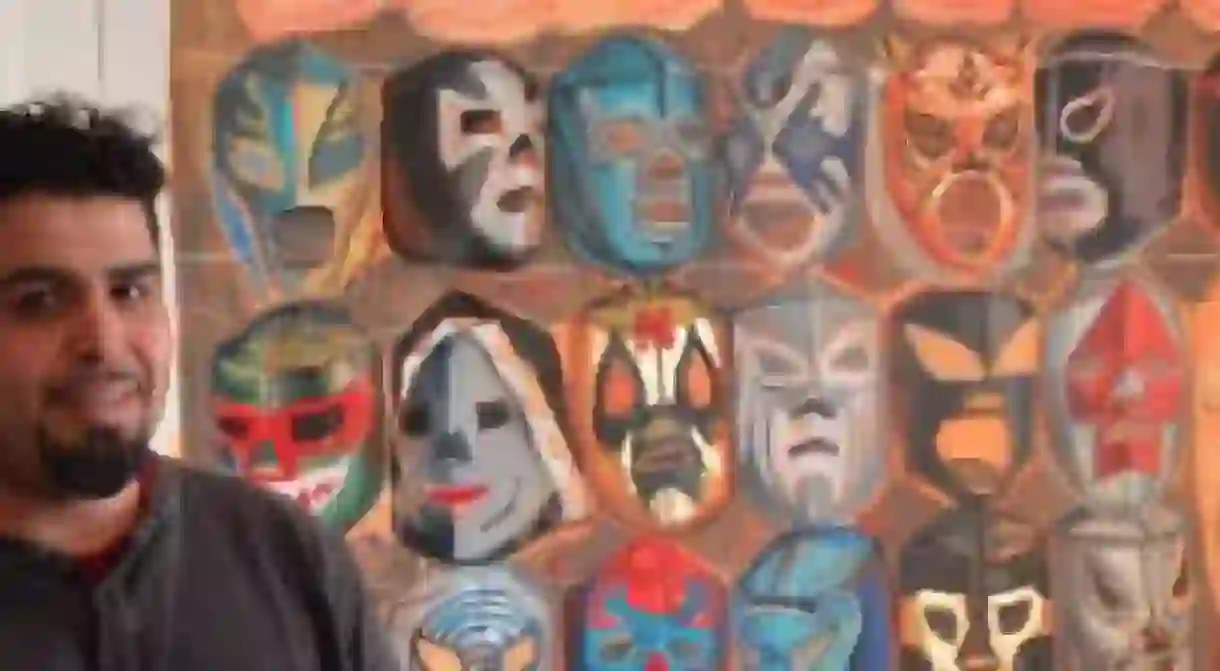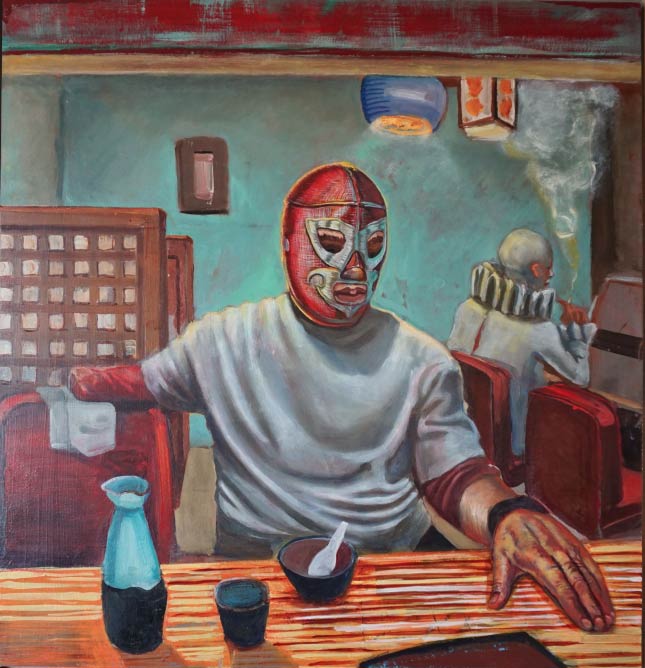LA Artist Sergio Teran Is Multi-Layered

Los Angeles and lucha libre-inspired artist Sergio Teran uses his Montebello home as the hub for his layered mixed media works. Within the boundaries of his home-cum-art-studio-and-gallery, he translates the messages, noises and visions of LA Mexican American survival and identity. Michael Reyes writes about Teran’s inspirations for makeshift approaches to canvases and art and the narratives behind his lucha libre mask motifs.

The craftworks of a Tarot card reader, seamstress mother and a luchador welder father are infused into Sergio Teran’s memory and artworks. The laborious, handmade nature of his own art making process recalls the traditions of his working-class parents and upbringing.

He builds the frames for his art works from refurbished material, applying varied treatments and textures of layered panels and paint buildups. Teran’s improvised art-making processes are part of the narratives of his art subjects, including his worn frames and intentional traces from production.

‘I always, inherently, wanted to experiment,’ Teran says. ‘I don’t always know where [a piece] is going to go.’ However, he likes not knowing, he adds, and allowing a piece to grow—a building process he adopted from his father.

Teran’s results are visual narratives of the grazed, tired, bruised experiences and sensations that inform his LA Mexican American reality and story.

Portraits of Teran’s family and friends turned famed luchadores are common subjects of his work. Framed in nostalgic, pensive, sometimes fearless attitudes and noisy environments of layered media, his luchador pieces become examinations of identity, home and empowerment in the face of struggle—a reality he’s experienced and navigated with his art.

‘Whenever I’ve dealt with the masks, it’s been an issue of identity—understanding who I was,’ Teran says. Wearing a mask, he adds, is transformative. The ritual of putting on a mask transcends the physical surface pain and liberates the enmascarado—the masked person.

With relatives formerly in the LA lucha libre circuit, the mask was always a familiar icon to Teran. Lucha libre culture in LA has enveloped not only his life, but also the life of so many others. The enmascarado, as associated with lucha libre in LA, has become Mexican American mythology. To many lucha libre fans, the masked person tells a story of both a bicultural person and warrior against societal boundaries.

Growing popular in 1930s Mexico, lucha libre was a working-class spectacle with masked wrestlers, high-flying maneuvers and matches that often times had wagers. Even today, losers may be required to unmask themselves, shamefully revealing their identities. The sport has grown synonymous with Mexican and Latino identity, including Teran’s.

Teran says that what makes LA an intriguing city is the havens and identities that Mexican American people create for themselves within the obstacles of discrimination and poverty. This fabric has influenced his artwork, including the transformation of his home into an art studio and a shrine to the former works of his parents. Each makeshift, self-built space—Teran’s artworks included—has a larger vision of possibility.
An art educator at Cerritos College and East Los Angeles College, Teran’s recent project is creating a frame for his luchador portrait, which will be shown at La Bulla—a lucha libre event, concert and art show at Plaza de La Raza in LA on April 11th.













